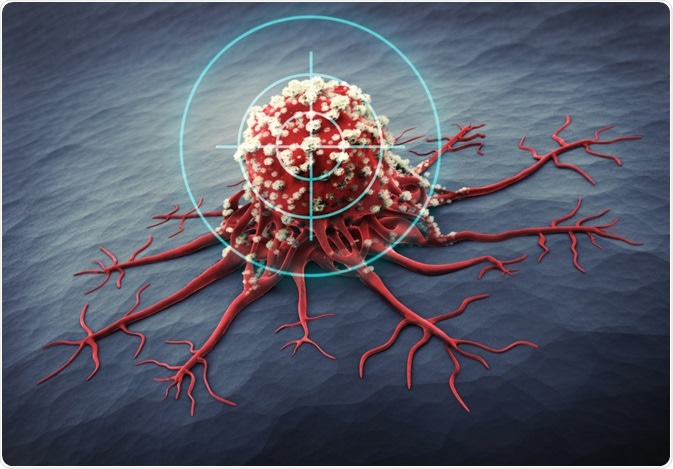Von Hippel-Lindau (VHL) syndrome is a genetic disorder that is characterized by the growth of benign and malignant tumors in the central nervous system (CNS) and viscera. This may include many different types of tumors, such hemangioblastomas, renal cell carcinoma (RCC) renal cysts, and phaeochromocytomas.
The name of this syndrome originates from Eugene von Hippel and Arvid Lindau, both of whom described retinal and other tumors in 1904 and 1926, respectively. VHL syndrome is a rare disorder that affects approximately 1 in 36,000 live births. The majority of these involve a gene mutation that has been inherited from a parent that is a carrier for the disease, although approximately 20% of cases are new mutations.
Meet VHL - Help us find a cure!
Cause
VHL syndrome is caused by mutations in certain tumor suppression genes (3p25-26), which results in highly vascular tumors.
The genetic mutation is usually inherited from a parent who is affected by the disorder and thus follows an autosomal dominant pattern with high penetrance. This means that only one copy of the gene needs to be inherited in order for an individual to be affected. Approximately 20% of VHL syndrome cases present with a spontaneous gene mutation and no family history of the disease.
The characteristic formation of tumors in VHL syndrome does not begin, however, until a second gene mutation is acquired at some point in the individual’s lifetime. It is not clear what causes this second mutation, but it occurs eventually in almost all individuals with the inherited gene mutation.
Classification
There are several different types of gene mutations associated with VHL, including:
- Type 1: may develop or tumor types but a low risk of phaeochromocytoma
- Type 2A: phaeochromocytomas present with a low risk of RCC
- Type 2B: phaeochromocytomas present with a high risk of RCC
- Type 2C: phaeochromocytoma only with no evidence of other tumors
Patient presentation
Individuals may present with VHL syndrome at any stage of life, from those in their early childhood to the elderly. The various tumors that develop are the primary physical sign of VHL syndrome. Some of the different types of tumors associated with VHL syndrome include:
- CNS hemangioblastomas affect approximately two-thirds of patients with VHL syndrome, making them the most common type of tumor. Although benign, these tumors can cause significant morbidity depending on their location in the CNS.
- Retinal haemangioblastomas affect up to 60% of VHL patients but are typically asymptomatic until complications such as edema, retinal detachment, or glaucoma arise.
- Phaeochromocytomas are usually benign but may cause symptoms such as headaches, palpitations, and episodes of shock-like signs.
- Renal cell carcinoma (RCC) and cysts affect up to 60% of VHL patients and are usually asymptomatic. RCC requires surgical removal, whereas cysts do not usually require treatment.
- Pancreatic tumors are usually asymptomatic and detected with diagnostic imaging. Benign tumors do not usually need to be removed; however, those with metastatic potential should be managed with surgical resection.
- Endolymphatic sac tumors are benign but can erode the bone in the inner ear, which can lead to tinnitus, vertigo, or hearing loss.
- Epididymal cystadenomas are usually asymptomatic and detected with ultrasound imaging. These tumors typically do not require treatment.
- Broad ligament cystadenomas are usually asymptomatic and detected with imaging techniques. Treatment is only required for rare symptomatic cases.

Image Credit: petershreiber.media / Shutterstock.com
Diagnosis
Early diagnosis of VHL syndrome is preferable to allow timely management of the disorder and reduce its impact on the life expectancy. Previously, life expectancy of individuals with VHL syndrome was approximately 50 years; however, this has improved significantly with the introduction of screening and early management.
Patients with family members who have the disease should be screened to detect genetic susceptibility for VHL syndrome. Genetic testing is very sensitive for affected families, but can become more complex for new spontaneous mutations, usually due to mosaicism. Antenatal testing for early diagnosis is an option for families with a known mutation for VHL syndrome.
In order to be diagnosed with VHL syndrome, an individual must have either multiple tumors that are characteristic of the syndrome or a family history of the syndrome that is accompanied by one characteristic tumor.
References
Further Reading
Last Updated: Mar 18, 2021